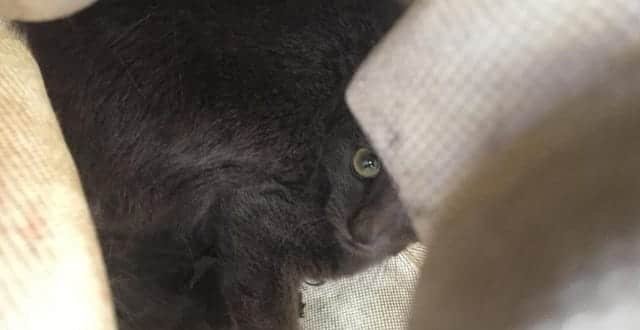NORTH CAROLINA - Students might not be allowed to keep pets, however, hidden in the nooks and crannies of West Campus, some kitty residents are calling Duke home.
Alongside the commonly-known squirrels and birds, at least six cats are living on West Campus, most of the time minding their own business and sometimes curled up on a warm lap.
A calico cat, who is known as the Wannamaker or Keohane cat, can frequently be found soaking up the sun underneath the bushes behind Few Quadrangle. The cat—known to some as Pepper, Angel, Sunny, Peaches or Kitty—is among the one of the most approachable on campus, allowing strangers to come up and pet her on the stomach, which is typically a very taboo zone for cats.
Photo by Carolyn Chang | The Chronicle
This cat can often be found lounging on a blanket or under the bushes, noted junior Anna Li, a Few Quad resident assistant, in an email.
“She loves sunbathing and will generally keep to herself unless you call out to her,” Li commented. “She especially loves a warm lap when the nights get colder and will often jump right in if you sit down. Probably the most popular cat on campus.”
Li noted that she and several other students do actually feed “Peaches” regularly.
Junior Kira Panzer also reported frequently interacting with the cats, noting that she frequently spots cat food outside of Wannamaker.
The cats have gained some prominence through students sharing them on social media with friends. Senior Leonard Giarrano, who is a resident assistant and a member of The Chronicle’s independent editorial board, explained that he calls the cat Peaches and frequently takes Snapchats of her and sends them to his friends and sister.
“The blanket Peaches has was given to her by some resident of Keohane who thought she might enjoy it,” he noted in an email.
Another cat that accepts some belly rubs lives in the area between Perkins Library and Duke Gardens and often walks with students on their way to class. Smokey, as Li tends to call him, is gray with some white coloring.
In addition, a very shy black cat lives behind the Old Chemistry Building. Although the cat maintains a careful distance from all people, it can often be found with plates of cat food and water.
Li went on to explain that a group of semi-feral cats live in the woods behind the Bryan Center where they have food bowls and several structures that may function as shelters. Li noted that the friendliest of the bunch include a black and white cat who she has named Oreo as well as a black cat she calls Shadow. Shadow readily approaches strangers and allows some petting but is still rather timid and easily spooked, Li said. Two other cats she has named—Sandy, a sand-colored cat with a small patch of white, and Pepper, a tabby cat—are a lot more skittish and do not allow people to get close.
Larry Moneta, who is vice president for student affairs, wrote in an email that he had never heard of these particular cats but noted that Duke has a long history of “feral cats” on campus. He referenced Helen Cook, who is a critical care nurse at Duke, who used to volunteer with Operation Catnip, which is a volunteer effort to humanely control the feral cat population through trapping cats, neutering them and then returning them to where they were found.
However, the administrators of the school do not seem too concerned about the presence of cats on campus.
Michael Schoenfeld, who is vice president for public affairs and government relations, stated that he has heard about the cats, remembering that when he was at Duke, there were stray dogs—called “quad dogs”—that lived on campus.
“So far they have not reached the level of squirrel infestation or ducks in the Gardens, so I don’t think its something to worry about for the moment,” he concluded.
Nothing wrong with a little bit of ‘kitty love’!






